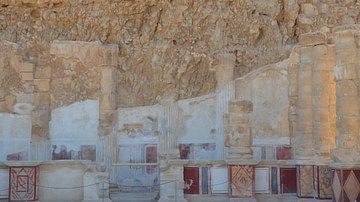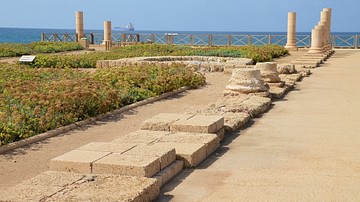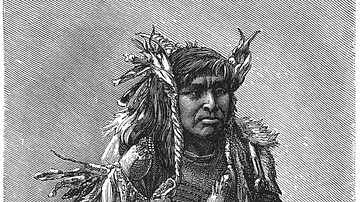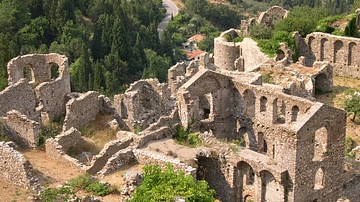Search
Search Results

Image
Lower Terrace of Herod's Northern Palace, Masada
The lower terrace of Herod's Northern Palace, Masada, Israel.
The lower terrace was used for receptions and banquets. It was enclosed on all four sides with porticoes and included a Roman baths.

Article
Games, Sports & Recreation in Ancient Egypt
Although the ancient Egyptians are often depicted as death-obsessed and dour, they actually had a great appreciation for life and their culture reflected their belief in existence as an eternal journey imbued with magic. Life was a gift from...

Article
Clergy, Priests & Priestesses in Ancient Egypt
The ancient Egyptians understood that their gods had prevailed over the forces of chaos through the creation of the world and relied upon humanity's help to maintain it. The people of Mesopotamia held this same belief but felt they were co-workers...

Image
Lewis and Clark on the Lower Columbia
The Lewis and Clark Expedition meet the Chinook people on the Lower Columbia River in October 1805, watercolor on paper by Charles M. Russell, 1905.
Amon Carter Museum of Art, Fort Worth, Texas.

Image
Lower Terrace of the Promontory Palace, Caesarea Maritima
The Lower Terrace of the Promontory Palace of Herod the Great (r. 37-4 BCE) stretching into the sea, it was the private section of the palace, Caesarea Maritima, Israel.

Image
Lower Chinook Chief from Warm Spring Reservation (1886)
Lower Chinook Chief from Warm Spring Reservation (1886), illustration published in Deutscher Kinderfreund. Nr. 7, Hamburg April 1886, edited by C. Ninck.

Image
Mystras Lower Town
The city of Mystras (or Mistras) in Southern Greece was the provincial capital of the Byzantine Despotate of the Morea from the 13th through the 15th centuries CE.

Image
Lower Innisidgen Burial Chamber
This chambered entrance grave is found on the island of St. Mary's in the Isles of Scilly. It consists of a rectangular chamber and capstones on top. The exact date it was built is still unknown, but pottery found at the site suggests that...

Article
Queen Hatshepsut: Daughter of Amun, Pharaoh of Egypt
Hatshepsut, whose name means "Foremost of Noble Women" or "First Among Noble Women" (royal name, Ma'at-ka-re, translated as "spirit of harmony and truth") was the fifth ruler of the 18th Dynasty (r. 1479-1458 BCE). She was the daughter of...

Article
Jobs in Ancient Egypt
In ancient Egypt, the people sustained the government and the government reciprocated. Egypt had no cash economy until the coming of the Persians in 525 BCE. The people worked the land, the government collected the bounty and then distributed...